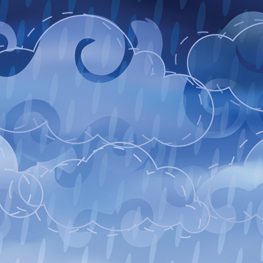
All children have tough days. They get into fights with siblings, have problems at school and need some extra hugs for bad dreams or fears. That’s normal. But a small percentage of children are dealing with a much bigger health concern: childhood depression.
It’s hard to imagine that a child of five or six may be carrying the burden of depression, but health professionals agree: 2 to 6 per cent of children and adolescents suffer from major depression. Of these, 70 per cent will continue to struggle with depression into adulthood.1
One of the reasons health professionals have under-diagnosed childhood depression is the fact that it looks different in children. A young person with depression may only seem irritable or moody. He or she may complain of general aches and pains, focus on negative patterns of play, perform poorly in school and burst out in anger or frustration. He may be disruptive. She may fail to make friendships or feel inappropriately guilty. Children may not have the language to explain the severity of their feelings.
Childhood depression negatively affects family relationships. The outbursts and lack of ability to enjoy life may be seen as behavioral issues needing firmer discipline. The cycle of failure and discipline can further damage the child’s self-image and increase feelings of hopelessness. For unknown reasons, more girls than boys suffer from depression. It can be triggered by stressors such as abuse or neglect, chronic illnesses, onset of puberty or losses such as a death in the family.
Important studies on childhood depression began in the 1940s when pediatrician Renee Spritz did clinical studies of institutionalized infants. The patterns of apathy, social withdrawal and “failure to brighten” when stimulated were the result of neglect. It was concluded that even babies can display depressed behaviors. It is believed that such early abuse and neglect can affect brain development.
Early diagnosis of childhood depression is very important. The most common treatments are Cognitive Behavior Therapy (CBT) and in some cases, antidepressant medications.2
CBT focuses on educating both parents and children in healthier coping skills, positive problem-solving, conflict resolution, social and assertiveness skills and relaxation techniques. Parents are trained to have age-appropriate expectations for their children and are helped to develop nonjudgmental patterns of communication to support a better self-image. Other focuses may be on dealing with negative thought patterns, grief resolution and handling unsettling changes such as moves, loss of friendships, or divorces. One specific early intervention for parents and children is called Parent Child Interaction Therapy (PCIT). In PCIT, parents are trained in nurturing their children and in limit-setting to enhance emotional development.3
When parents have questions about their child’s social and emotional well-being, there are several ways to proceed. They can make an appointment with their family doctor and be referred to mental health professionals, preferably those with pediatric experience. Another starting point is with the child’s classroom teacher and the counselor at the local school. The sooner interventions are begun, the sooner negative patterns can be broken and the greater the likelihood that the child can move toward a happier daily life.
Jan Pierce, M.Ed., is a retired teacher and freelance writer. She focuses on topics related to parenting and family life skills.
Resources
1. Bhatia, Shashi K. M.D. and Bhatia, Subhash C. M.D., Childhood and Adolescent Depression, 2007, Creighton University, Omaha, NE, American Family Physician Website: www.aafp.org/afp
2. Hazell, Philip, 2003, Depression in Children and Adolescents, University of New Castle, New South Wales, Australia. www.ebmentalhealth.com
3. Luby, Joan H. Professor of Psychiatry, 2010, Preschool Depression: The Importance of Identification of Depression Early in Development, Washington University of Medicine, Psychiatry, St. Louis, MO.
Calgary’s Child Magazine © 2024 Calgary’s Child